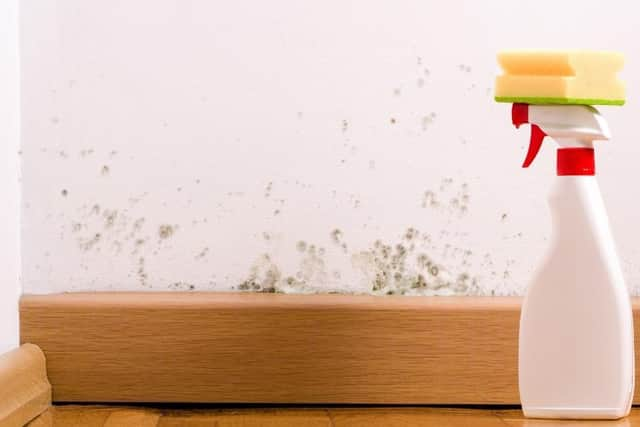Mould in West Sussex homes: council issues advice to tackle damp following national concern about problem
and live on Freeview channel 276
There has been a rise in reports about the issue across the UK as the country enters the colder months.
The council said condensation is probably the most common cause of mould growth, and is caused by a combination of excess moisture in the air and poor ventilation in homes.
Advertisement
Hide AdAdvertisement
Hide AdA council spokesperson said: “At this time of year as the weather gets colder, some people will start to see an increase in the amount of condensation forming around their homes. A family of four can add the equivalent of 30 – 40 litres of water a week just by breathing. Showering, cooking and bathing can add up 20 more litres; drying clothes inside can add an additional 10 to 15 litres. Condensation typically occurs when warm, moist air meets cold surfaces. A build-up of condensation can lead to black mould forming, which is unsightly and, in large quantities, may impact on the health of vulnerable people. In order to keep on top of condensation it is important to let warm moist air out regularly, and this can be done by controlling ventilation and air circulation.”


Horsham District Council cabinet member for Environment, Recycling and Waste councillor Jay Mercer said: “When condensation is left to accumulate it can cause problems in your homes, and if black mould develops in large amounts it can aggravate existing respiratory health conditions. As the colder weather is now upon us, it is better to take action now to prevent excessive amounts of condensation forming. If you are living in rented accommodation and have tried to reduce it, and your landlord does not respond to your concerns, please do contact our Environmental Health Private Sector Housing team for further advice.
“(Horsham District residents) can email us at: [email protected] or call 01403 215641. Alternatively, more information is available at www.horsham.gov.uk/environmental-health/housing-standards/damp-and-mould or england.shelter.org.uk/housing_advice/repairs/damp_and_mould_in_rented_homes.”
Horsham District Council has issued some top tips for avoiding the build-up of mould:
Advertisement
Hide AdAdvertisement
Hide AdUse mechanical extraction fans in bathrooms for 20 minutes after bathing or showering, and open windows. People can also dry any wet surfaces with a cloth that can be squeezed out or put a small amount of cold water in the bath before adding hot to reduce steam.
People are advised to use extractor fans and windows in the kitchen while cooking. Placing lids on saucepans also reduces steam and moisture.
When washing clothes, people can give them an extra spin in the washing machine to help them dry quicker. Putting an airer in a room where you can close the door and open the window works helps dry clothes without adding moisture to the room.
People should keep a small gap between large items of furniture to allow warm air to circulate. Try not to overfill cupboards either.
Advertisement
Hide AdAdvertisement
Hide AdMaintaining an even temperature or above 15oC throughout the home helps prevent condensation build up.
People can use diluted bleach to wipe it away black mould if it is developing. Gloves and a mask are recommended while doing this. Bicarbonate of soda works well on mould growth on soft furnishings or suede or leather.
Renters who still have a lot of condensation and black mould should report the issue to their landlord.